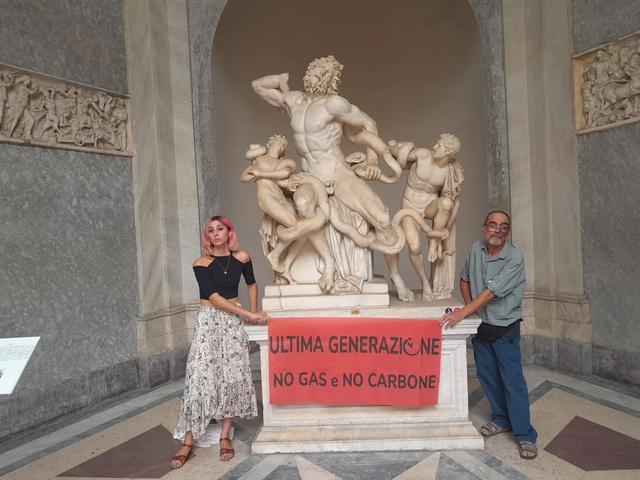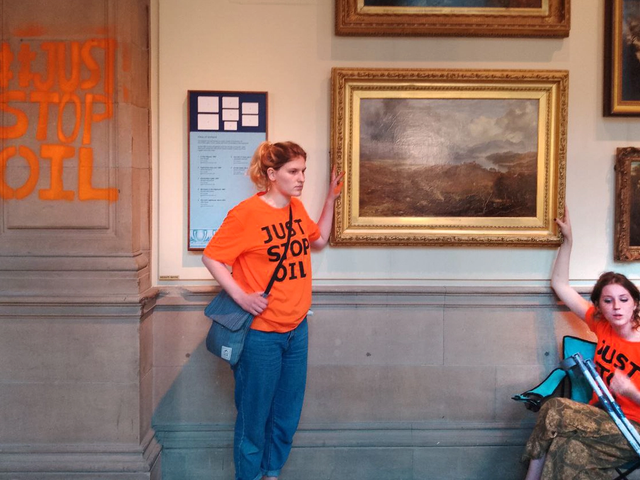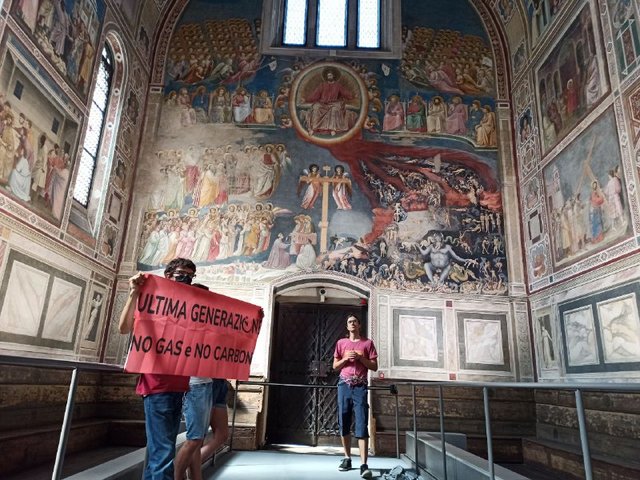One of the most famous paintings in the Gallerie degli Uffizi in Florence, Sandro Botticelli's Primavera (around 1480), was left undamaged after climate activists glued themselves to the masterpiece, gallery officials say. The protest on 22 July was carried out by a man and two women from the climate activist group Ultima Generazione (Last Generation); all three were dragged away by security guards though it is unclear if the demonstrators have been charged.
A gallery spokesperson says that the protesters glued themselves to the glass covering the work, which took 20 minutes to clean following the glue incident. “If there had not been the special protection glass—something that museum management put in place with all major masterpieces a few years ago—then the work would have been badly damaged.” The protestors also rolled out a banner which read: “Last Generation: No Gas, No Coal.”
In an online statement, Ultima Generazione representatives say that there was no risk to Botticelli’s celebrated work. “We consulted restorers who advised us to use a glue suitable for glass and frames,” they say. The group says meanwhile that governments worldwide must "immediately stop reopening disused coal plants and halt any new oil and gas extraction projects".
“In the same way that we defend our artistic heritage, we should be dedicated to the care and protection of the planet that we share with the rest of the world,” they add. The press statement is headed, “Actions in museums: let’s start with the Uffizi”, implying that other activist campaigns at Italian institutions may be imminent.
The protest follows a number of similar actions in the UK at major museums and galleries. Earlier this month, environmental activists from the group Just Stop Oil glued themselves to the celebrated Constable painting The Hay Wain (1821) at the National Gallery in London; Kelvingrove Art Gallery and Museum in Glasgow, Manchester Art Gallery and the Royal Academy of Arts in London were also targeted.
Primavera shows nine figures from classical mythology gathered in an orange grove including the goddess of love and beauty, Venus, and a blindfolded Cupid, firing his arrow. “Although the complex meaning of the composition remains a mystery, the painting is a celebration of love, peace, and prosperity,” says a statement on the Gallerie degli Uffizi website.






